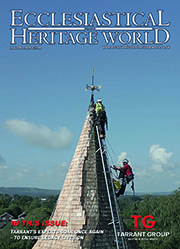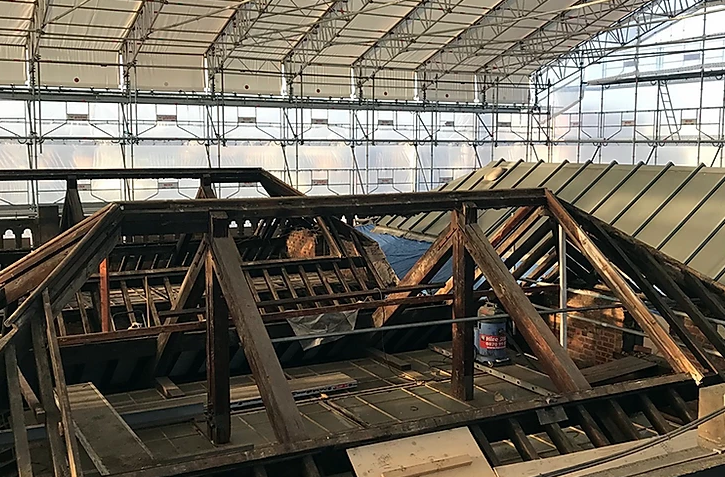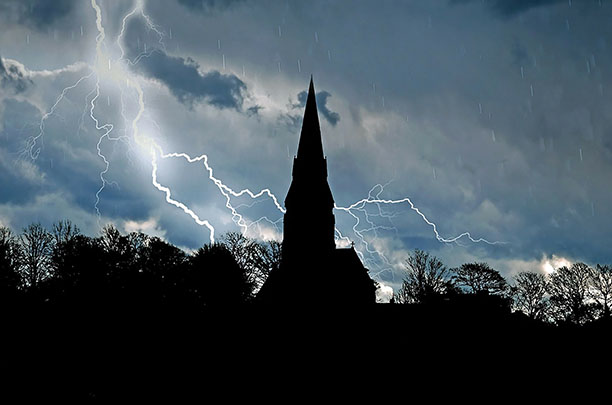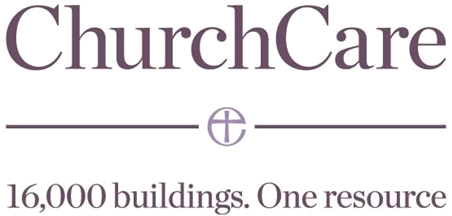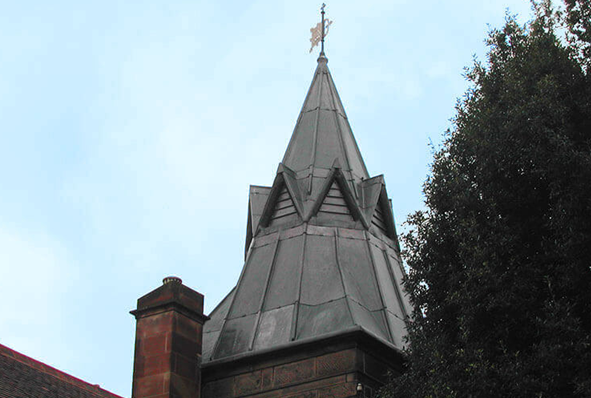Heritage Roofing
Heritage roofing - maintaining our iconic buildings
The UK is home to some of the most iconic buildings in the world, from stunning churches and cathedrals to historic stately homes. Each and every one of these remarkable feats of architecture requires regular maintenance to ensure they remain in the very best condition, allowing them to be enjoyed for generations.
Lightning Protection
When lightning strikes are you protected against this act of God?
The issue of lightning protection in churches is one that has exercised this publication for many years. In this four-part series of spotlights on the issue we will be revisiting various aspects of the subject, beginning with an overview of current thinking.
Traditional Lime
Lime: it’s better for buildings – and for the environment
It is now fairly well known that cement is not good for old buildings and that lime mortar should be used. But why? What are the advantages and what are the disadvantages? In order to begin to answer those questions it is necessary to understand the nature of traditional building, the process by which buildings used to be built, and how it differs from modern construction, the process by which we build today.
Audio Visual
Audio visual equipment in church buildings
This guidance is issued by the Church Buildings Council under section 55(1)(d) of the Dioceses, Mission and Pastoral Measure 2007. As it is statutory guidance, it must be considered with great care. The standards of good practice set out in the guidance should not be departed from unless the departure is justified by reasons that are spelled out clearly, logically and convincingly.
Read More...
CRE Events
Churches are coming under starter’s orders for CRE 25
Churches across the nation are beginning to make preparations for their visit to Christian Resources Exhibition’s CRE 25.
Insurance
You need to ensure that reasonable precautions are in place at your church to keep it safe for those who use it. To do this, you need to think about what might cause harm to people.
You will then need to decide if the precautions already in place are adequate. If they are not, you may need to identify further action to prevent any danger. When done formally, this is known as a risk assessment.
LPOW Grants
£23 million government package to support restoration of thousands of listed places of worship
Heritage Minister Sir Chris Bryant has announced that the Listed Places of Worship Grant Scheme will be extended into the next financial year, providing £23 million so that thousands of historical buildings, including churches, synagogues, mosques and temples, can carry out restoration work.
Lead Roofing
Lead is one of the oldest materials in the roofing industry and is still commonly used throughout the world today.
Lead roofing is a traditional roofing method which has been used in the industry for hundreds of years, and is therefore proven to be extremely reliable. Lead roofing, and sand-cast lead, in particular is ideal for old buildings such as churches or historical renovations, whereas milled lead roofing is a mass-produced alternative, used for precision and accuracy in homes and commercial buildings alike.
Home
ROYAL OPENING
A very successful visit by the Duke of Gloucester who officially opened the tin tabernacle which is approx. 10m x 5m, plus a small vestry and little porch.
One of the nicest things about the day was the attendance by various people from South Wonston who were delighted that the Museum had saved the building and brought it back to life as a ‘living’ building. The Rev Bob Clarkson who was the minister in charge of the church when it was in use came along, as did the current Assistant Curate at Lower Dever Benefice the Rev Karen Kousseff. A lady who went to Sunday School in the chapel was there – she now plays the organ in the village of West Dean, just down the road from the Museum. The original altar is in situ in the chapel, plus the original altar cloth and frontal. The original font has an interesting story – the original South Wonston main church burnt down, and during the clear up they found an old font buried under the floorboards. This font was then used in the chapel, then relocated to the main church when it was rebuilt. A replica of this font is now being made for the chapel by apprentice stonemasons.

Quote from Henry Warner, Head of Operations at the Museum: “We were delighted that the Duke of Gloucester was able to visit the Museum and officiate at the opening of this exciting project. We were also delighted to welcome so many people from the South Wonston area who remembered and used the tin tabernacle when it was a functioning chapel, and who were very moved knowing that the Museum has not only saved it but brought it back to life as a ‘living’ building.”
The shot of the Duke in the Chapel has our Museum Director, Richard Pailthorpe on the left, with representatives from South Wonston on the right.







